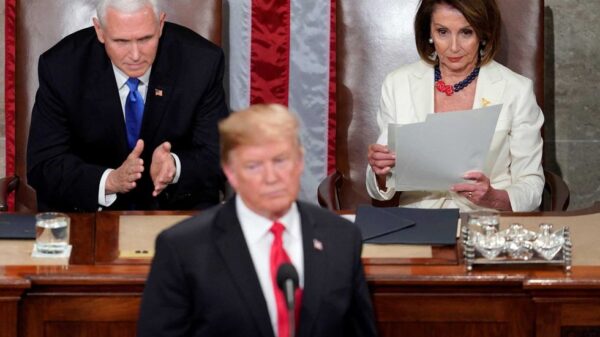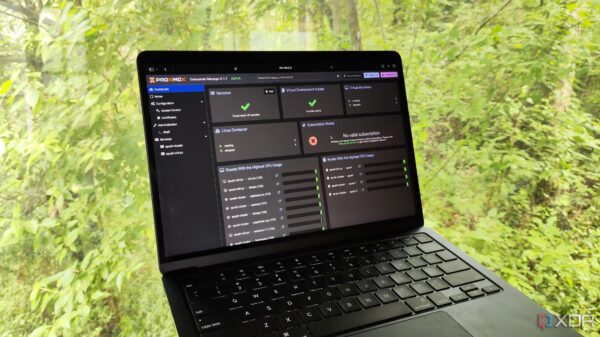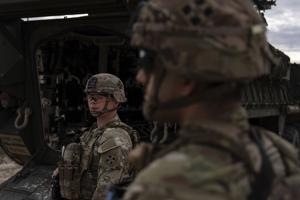UPDATE: The U.S. military has dramatically expanded its role in border enforcement, deploying 7,600 troops to the Mexico-U.S. border as illegal crossings hit a 60-year low. This significant shift is taking place in Nogales, Arizona, where military personnel are on alert to deter unauthorized entries.
Earlier this week, an Army scout spotted a potential illegal crossing, sounding alarms that sent the individual retreating back into Mexico. This incident highlights the heightened vigilance at the border, as the military’s presence aims to instill fear of apprehension among would-be crossers.
President Trump’s administration has intensified border security measures, including authorizing funding for an additional 3,000 Border Patrol agents with enticing $10,000 signing bonuses. The deployment strategy, overseen from a new command center near the Huachuca Mountains, marks a significant militarization of border enforcement, with troops now empowered to detain individuals trespassing on military properties.
Army Maj. Gen. Scott Naumann, leading the mission, stated, “We can fly people into incredibly remote areas now that we see the cartels shifting course.” He emphasized the military’s ability to respond swiftly to emerging threats, collaborating closely with U.S. Border Patrol agents in high-traffic zones for illegal crossings.
The military’s enhanced operations include over 117 armored Stryker vehicles, more than 35 helicopters, and drones equipped with advanced surveillance technology. These assets enable continuous monitoring of vast stretches of border territory, which has become increasingly critical as smugglers adopt new strategies.
Despite the decrease in apprehensions, Naumann warns against complacency. “We’re having some successes; we are trending positively,” he remarked, noting that the mission has no definitive end date and that seasonal changes could alter crossing patterns significantly.
The deployment has sparked debate about the implications of military involvement in domestic law enforcement. Experts, including law professor Dan Maurer, highlight the potential conflict with the Posse Comitatus Act, which restricts military enforcement of civilian laws. Joshua Kastenberg, a former Air Force judge, labels this approach as operating within a “gray area,” questioning the legality of military actions on U.S. soil.
As the military continues its significant border operations, the focus remains on preventing “got-aways”—individuals who evade capture and disappear into the U.S. This urgent situation continues to unfold, with community residents in Nogales expressing mixed feelings about the military’s presence.
The Trump administration’s border strategy extends beyond Nogales, involving military personnel in various capacities nationwide, including securing federal buildings and supporting Immigration and Customs Enforcement efforts. This comprehensive approach aims to reinforce Trump’s commitment to his immigration reform agenda, demonstrating a robust, albeit controversial, stance on border security.
As the situation develops, attention will be focused on how these military measures impact both illegal crossings and the broader community dynamics along the border. Stay tuned for more updates as this story unfolds.








































































